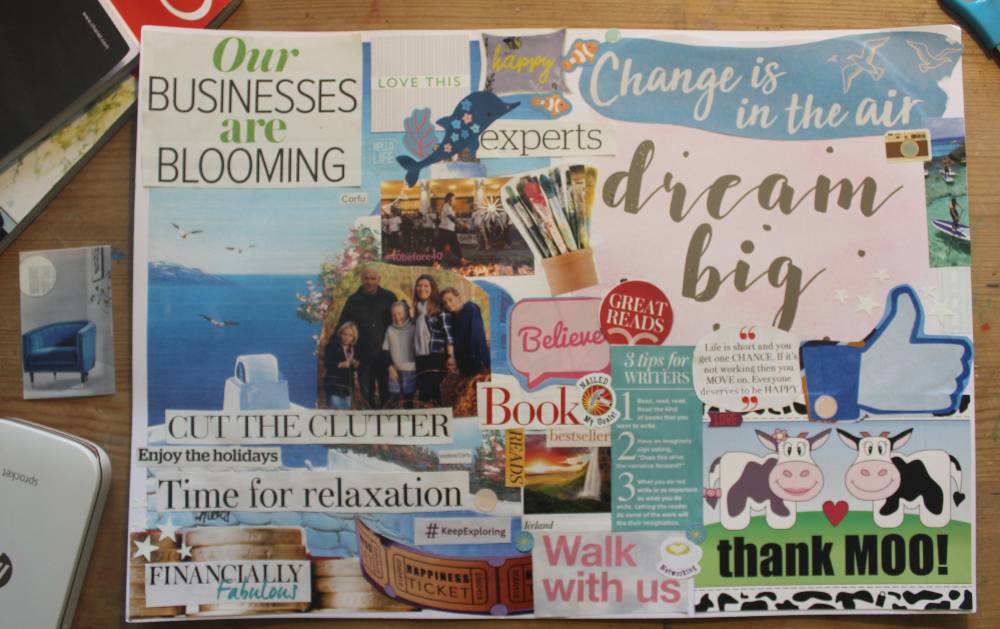A vision board is a creative process of collating a visual representation of your values, hopes and goals. It typically involves putting together a collection of inspirational images, words and/or quotes that illustrate what you want your life to look like and what you are capable of achieving.
How can creating a visual board help me stay motivated in recovery?
No matter what stage you are at in your recovery and wellness journey, creating a vision board can be a powerful reminder that a future without the ED is possible and help you envision what this future may look like.
When we’re living with an eating disorder, we tend to see the world through the ED’s lens. ED can cloud our judgement and make us feel like a life with ED is all we are worthy of. This means that ED can take a lot of way from us and hold us back from goals, ambitions and activities that we would otherwise engage in or strive towards. This can encompass many areas of our life but commonly impacts values, dreams and goals related to hobbies, travel, career or study goals and our social lives and relationships.
As we have touched on, thinking about your hopes and goals in recovery may seem difficult or perhaps even confronting. However, the process of creating a vision board can help reaffirm your healthy self’s true aspirations. Through this daily visual reinforcement, we can establish positive connections with recovery and be motivated to keep pushing through the discomfort and hurdles.
How do I create a vision board?
- To begin creating your vision board, start to think about the goals and dreams you hold for the future. Allow yourself time to think and consider what recovery means to you. You may like to jot your ideas or key words down in a journal first. You might think about what your life looked like before your ED, what your ED is holding you back from and what you could achieve beyond life with an ED. This is a unique process for everybody but your dreams and goals might centre around hobbies, family, friendships, personal growth, career or study, travel or new experiences.
- Once you have started to develop an idea of what you wish to include on your vision board, begin to collect images that represent these aspirations. You may wish to find images, quotes and affirmations online through a platform like Pinterest, look through newspapers or magazines or use your own personal photos, written affirmations or drawings.
- Organise your images. You may wish to have one vision board or multiple ones for different areas of your life. There are no rules to how you arrange your images on your vision board. You can print out and stick images on paper or pin them to a board. If you’re somebody who prefers a digital format, you can organise your pictures using an online tool like Canva.
- Once completed, place your vision board in a place where you can see it every day. This could be somewhere like your bedroom so it’s the first thing you see when you wake up, your home workspace or if you’ve gone down the digital route, you could even set your vision board as your phone or computer background.
